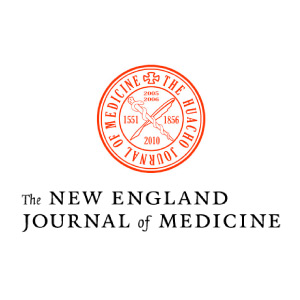Community-wide screening for tuberculosis in a high-prevalence setting

Citation: Marks, G. B., Nguyen, N. V., Nguyen, P. T. B., Nguyen, T.-A., Nguyen, H. B., Tran, K. H., Nguyen, S. V., Luu, K. B., Tran, D. T. T., Vo, Q. T. N., Le, O. T. T., Nguyen, Y. H., Do, V. Q., Mason, P. H., Nguyen, V.-A. T., Ho, J., Sintchenko, V., Nguyen, L. N., Britton, W. J., & Fox, G. J. (2019). Community-wide Screening for Tuberculosis in a High-Prevalence Setting. New England Journal of Medicine, 381(14), 1347–1357. https://doi.org/10.1056/NEJMoa1902129
Abstract: BACKGROUND: The World Health Organization has set ambitious targets for the global elimination of tuberculosis. However, these targets will not be achieved at the current rate of progress.
METHODS: We performed a cluster-randomized, controlled trial in Ca Mau Province, Vietnam, to evaluate the effectiveness of active community-wide screening, as compared with standard passive case detection alone, for reducing the prevalence of tuberculosis. Persons 15 years of age or older who resided in 60 intervention clusters (subcommunes) were screened for pulmonary tuberculosis, regardless of symptoms, annually for 3 years, beginning in 2014, by means of rapid nucleic acid amplification testing of spontaneously expectorated sputum samples. Active screening was not performed in the 60 control clusters in the first 3 years. The primary outcome, measured in the fourth year, was the prevalence of microbiologically confirmed pulmonary tuberculosis among persons 15 years of age or older. The secondary outcome was the prevalence of tuberculosis infection, as assessed by an interferon gamma release assay in the fourth year, among children born in 2012.
RESULTS: In the fourth-year prevalence survey, we tested 42,150 participants in the intervention group and 41,680 participants in the control group. A total of 53 participants in the intervention group (126 per 100,000 population) and 94 participants in the control group (226 per 100,000) had pulmonary tuberculosis, as confirmed by a positive nucleic acid amplification test for Mycobacterium tuberculosis (prevalence ratio, 0.56; 95% confidence interval [CI], 0.40 to 0.78; P<0.001). The prevalence of tuberculosis infection in children born in 2012 was 3.3% in the intervention group and 2.6% in the control group (prevalence ratio, 1.29; 95% CI, 0.70 to 2.36; P=0.42).
CONCLUSIONS: Three years of community-wide screening in persons 15 years of age or older who resided in Ca Mau Province, Vietnam, resulted in a lower prevalence of pulmonary tuberculosis in the fourth year than standard passive case detection alone.
METHODS: We performed a cluster-randomized, controlled trial in Ca Mau Province, Vietnam, to evaluate the effectiveness of active community-wide screening, as compared with standard passive case detection alone, for reducing the prevalence of tuberculosis. Persons 15 years of age or older who resided in 60 intervention clusters (subcommunes) were screened for pulmonary tuberculosis, regardless of symptoms, annually for 3 years, beginning in 2014, by means of rapid nucleic acid amplification testing of spontaneously expectorated sputum samples. Active screening was not performed in the 60 control clusters in the first 3 years. The primary outcome, measured in the fourth year, was the prevalence of microbiologically confirmed pulmonary tuberculosis among persons 15 years of age or older. The secondary outcome was the prevalence of tuberculosis infection, as assessed by an interferon gamma release assay in the fourth year, among children born in 2012.
RESULTS: In the fourth-year prevalence survey, we tested 42,150 participants in the intervention group and 41,680 participants in the control group. A total of 53 participants in the intervention group (126 per 100,000 population) and 94 participants in the control group (226 per 100,000) had pulmonary tuberculosis, as confirmed by a positive nucleic acid amplification test for Mycobacterium tuberculosis (prevalence ratio, 0.56; 95% confidence interval [CI], 0.40 to 0.78; P<0.001). The prevalence of tuberculosis infection in children born in 2012 was 3.3% in the intervention group and 2.6% in the control group (prevalence ratio, 1.29; 95% CI, 0.70 to 2.36; P=0.42).
CONCLUSIONS: Three years of community-wide screening in persons 15 years of age or older who resided in Ca Mau Province, Vietnam, resulted in a lower prevalence of pulmonary tuberculosis in the fourth year than standard passive case detection alone.
Author(s): New England Journal of Medicine
Year: 2019
Language: English
Region(s): VIET NAM
Resource Type: Journal Articles
Source: Other
Filed under: Case detection, Community, Journal Article, Prevalence, Research, Tuberculosis, Vietnam
